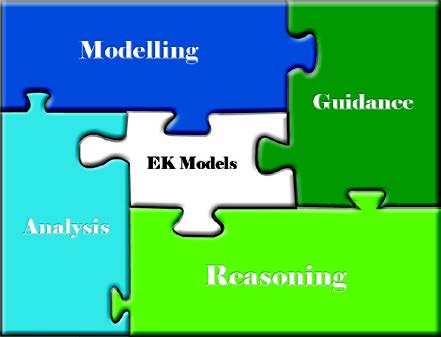Details
What is the purpose of EKD?
The purpose is to provide a clear, unambiguous picture of: (a) how the enterprise functions currently; (b) what are the requirements for change and the reasons for change; (c) what alternatives could be devised in order to meet these requirements; (d) what are the criteria and arguments for evaluating these alternatives.
What are the deliverables from EKD?
The deliverables are conceptual models (as opposed to financial, mathematical or any other type of model) which examine an enterprise and its engineering or re-engineering requirements from a number of interrelated perspectives. These models are abstractions from the physical world (hence the term conceptual models). For a given enterprise these models will collectively constitute the enterprise knowledge model for this enterprise. Coupled to these models is relevant information addressing the need for evaluating alternative operational situations; such information includes criteria for evaluation, choices available, measurement parameters and recorded arguments for and against choices.
How do we use EKD?
The approach will typically involve strategists, tactical managers and operational staff who together with modellers familiar in EKD will engage in the process of ‘diagnosing’ (modelling the current situation and the change requirements), ‘designing’ (modelling the alternative future situations) and ‘deliberating’ (modelling the rationale behind the different choices). Through these three fundamental activities, the business knowledge model will emerge. This business model will then be available to decision makers for making informed decisions about future enterprise operations.
What is the utility of the enterprise knowledge model?
At any stage of its development, the enterprise knowledge model can serve as the means of understanding and communication between the participants in the EKD process (as well as others wishing to get a view of the enterprise). It will be a common reference across many different functional areas so that its ownership will not be confined to specific applications or particular power groups. It will be independent of any technology so that the same model may be implemented on several technology platforms, and the model will remain valid irrespective of changes Introduction to technology; the model will need to be changed only when business requirements change. It will be used as a means of evaluating different implementations so that each potential implementation can be costed and also all intangible aspects are clearly documented.
Where can we use EKD?
It can be used in any business or information system engineering settings including both forward (from business requirements to data and process development) and reverse engineering (from legacy systems to business policy).


